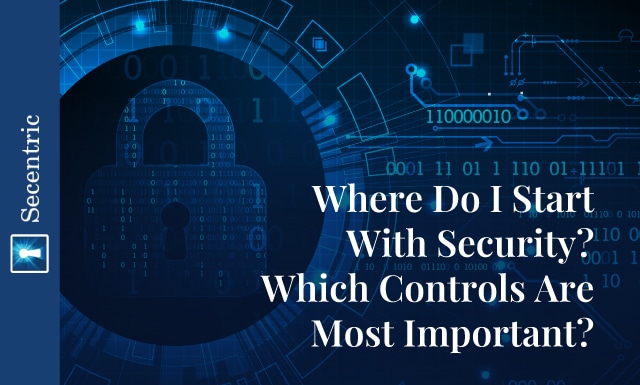Do want to know where to start with security and which controls are the most important? You’re in the right place. Many organizations believe they need a lot of money to get started with securing their system with a top-of-the-line security system. Watch the video below as Aaron talks about why getting started is more important than having the world’s most secure system.
Having a state-of-the-art security system can be a wise investment if you have the money to do so. But it does not necessarily mean that it can and will protect your systems if it does not have the different layers of firewall security needed to protect your business and information.
Getting started with protecting your systems can be overwhelming because there is so many options to choose from. But have no fear, Secentric is here to help guide you through all the different ways to protect your systems, and do it in a cost-effective manner to your budget. Don’t wait until it’s too late, get started today and give us a call!
Learn More:
Where Should You Start With Cybersecurity?
Cybersecurity – What If I Can’t Do All Of It?
Video Transcript
Timestamps
0:00 Intro
0:19 Which Controls Are Most Important? External Target Attacks
2:17 Visit Secentric To Get Started
For organizations that are considering starting their security program journey, we’re often asked where they should begin. The fact is there’s no one place for you to start. There is no one single most important control.
0:19 Which Controls Are Most Important? External Target Attacks
However, most attacks are either leveraged against end-users through tactics like phishing and things of that nature, other social engineering tactics, or attacks are leveraged against vulnerable systems or various configuration weaknesses on systems and networks, or against external facing services, and especially in a cloud-oriented world, external-facing services are very common, and for this reason, we suggest that you start by one, hardening your user base, ensuring that your users understand the kind of attacks that they should be on the lookout for, how to spot those attacks, and how they can protect themselves from falling victim to those attacks.
From a vulnerability exploit perspective, you want to do the basics with regard to system hardening. If you can implement stronger configuration standards, do that as well, but even if you don’t have advanced configuration management capabilities, start by enrolling your systems in auto-updates. Get the patches pushed out to your system so that you can start protecting yourself against the most prevalent vulnerabilities.
And finally, if you’re running any form of externally-facing services, consider multi-factor authentication. It’s still very common that we have password dumps that have been floating around on the internet for years and these passwords are still used by users in their daily jobs. So multi-factor authentication is going to help you protect against those forms of attacks, which are leveraging stolen user credentials.
The most important thing is is that no matter what your organization’s makeup is, no matter what your security program is going to look like in the long run, that you start today by implementing practical safeguards to protect your user base and your networks.
For organizations that are just starting out in their security program journey, Secentric has a free basic security policy that you can download and start with today.
2:17 Visit Secentric To Get Started
The free cybersecurity policy has a series of directives that will help you to start securing your systems, your users, and your environment immediately.


